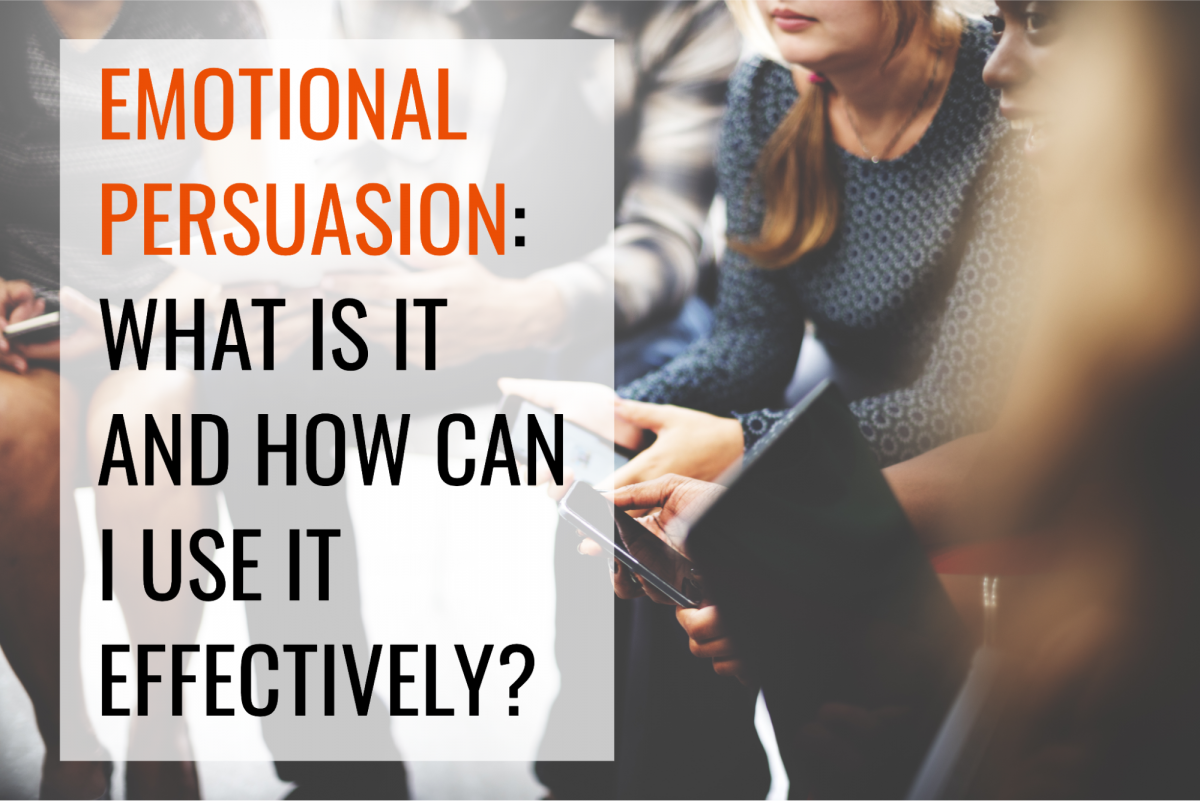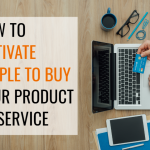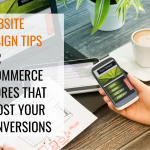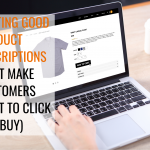Have you ever watched an advertisement that made you want to buy after viewing it? If your answer is yes, chances are the business used emotional persuasion as its hook.
Emotional persuasion is sometimes referred to as emotional triggers. It’s the one thing that will convince you that you need the product. Too many ecommerce companies focus on the features and benefits of a product in the description, rather than trying to evoke an emotion of how the customer will feel once they have the product.
Using emotion to persuade an audience isn’t something new. In fact, according to Ash Genete of Spiralytics, it’s been in use since the time of ancient Greece. But why? The answer is simple: because it works.
Today, buyers almost never hit the buy button based on cold hard facts alone. Instead, consumers are more prone to make emotional purchases instead of informed ones, which is where emotional marketing comes into play.
Essentially, emotional persuasion works to purposefully arouse consumers’ emotions to influence decision-making processes. According to Chris Collins from Sumo, in general, emotional persuasion techniques generally fall under three primary categories: words, visuals, and user experiences.
And if marketed correctly, these three elements can create emotional experiences that persuade consumers to take action, usually by subscribing or purchasing a product.
However, like all marketing techniques, it takes a lot of hard work and skill to successfully master the art of emotional marketing. But before we get looking at some tips to help integrate it into your marketing strategies, let’s take a quick look at what makes it so effective,
What Makes Emotional Marketing So Effective?
As most of us know, human emotion is incredibly powerful and is often the main driver behind most decisions that we make, whether we want to admit it or not. This is exactly why marketers continue to evoke emotion as a marketing technique.
There are many benefits that come from emotional marketing. Here are a few:
- It can make your content more shareable. People are more likely to share your content if it strikes a chord with them, whether that is because it makes them happy, or triggers fear and immediate action.
- It can influence purchasing decisions. Research has found that adverts that aim to evoke emotion versus those with rational content succeed more, meaning they have greater influence over purchase intent.
- It can make your brand more memorable. People always remember things more clearly when it’s associated with an emotion. It’s just human nature. This is why when you emotionally impact your audience, your brand is more likely to stay in their heads.
- It strengthens customer loyalty and customer retention. According to one study, customers that have an emotional relationship with a brand or business have a 306% higher lifetime value than those without. Furthermore, this group is also likely to recommend the business to others, which means that when consumers feel emotionally connected to a brand, they will even go as far as rewarding it with their loyalty and advocacy.
What Emotions Best Lead to Conversions?
As we’ve seen, appealing to your audience’s emotional drivers not only forms a better brand connection but can also build customer loyalty and even influence purchasing decisions. However, audiences won’t respond to just any emotion picked out of a bag. Like any technique, evoking emotions for marketing purposes requires careful and attentive selection.
In fact, according to Spiralytics writer, Ash Genete, “Emotional marketing often uses a single emotion to establish a connection.” And more often than not, it is stronger human emotions that will have the best chances of succeeding when trying to persuade.
For example, happiness is an emotion that many businesses play on to develop brand awareness and association due to its ability to make an audience feel good. Coca-Cola is a great example of a business that has been running campaigns that make its audience feel happy for decades, using wording and iconic taglines including “Open happiness,” or, “Have a Coke and a smile.”
Marketers don’t only use positive emotions to engage an audience. Negative emotions can be incredibly effective too. For example, fear is an emotion that many brands use to draw in an audience, especially if the goal is to encourage consumers to take immediate action, especially if that action leads to a purchase of their product.
Most climate change campaigns play on the emotion of fear to influence their audiences, often showing extreme images of pollution along with emotional language like, “Save the earth today to survive tomorrow.”
Other core emotions that marketers use in their strategies include anger, which is often used in campaigns to bring awareness to issues. They also appeal to our sense of belonging, due to it being one of our most basic needs. This is often seen in those advertisements or social posts that trigger our FOMO (fear of missing out).
When Does Emotional Persuasion Backfire?
When a brand gets emotional marketing right, the results can be outstanding. However, like any strategy, sometimes it can go wrong.
One of the more famous examples of this was Pepsi’s 2016 ad featuring Kendall Jenner, which was heavily criticized for being plain wrong and a bit tone-deaf. Sometimes these emotional appeals work, and other times, they border on the ridiculous, which is why it’s so important to know your target audience, and understand exactly what makes them tick, what their concerns are, and what they need in their life. See: Creating an Avatar of Your Customer.
Most of the time, backfires, such as Pepsi’s, can be avoided. Here are some of the more common reasons why emotional marketing efforts fail:
Poor Judgment
Sometimes a campaign fails because the marketer poorly judged its potential reception. This usually happens when not enough research has been done on the intended audience, where you’ve failed to understand how and what motivates them.
This leads to unexpected reactions, behaviors, and often negative emotions. In extreme cases, for bigger companies or well-known celebrities, it can sometimes even lead to a hefty PR bill as the company tries to mitigate some of the damage.
An Emotional Appeal Wasn’t Needed in the First Place
Not everything needs to be sold with emotional appeal. In fact, some research found that emotional appeals often backfire when an audience prefers unemotional appeals. So make sure you know your product and your audience well.
It’s important to also consider the relationship you have between your brand and customers. Would they expect your brand to take a stand on a certain issue and use that to emotionally impact you? If not, perhaps consider using emotional marketing in a more subtle sense, such as simply sparking some joy, or you could risk compromising the authenticity of your brand.
Emotional Persuasion Tips and Strategies
Just like all other marketing strategies, the best way to create effective emotional appeals in your marketing that generate results is to have a good plan in place.
When starting out, the safest way to approach emotional marketing is to evoke more joyful emotions, such as happiness. If you go in too strong, too soon with your emotional marketing, you can risk damaging your brand’s image and relationship with your customers.
Here are seven tips and tricks to help guide your emotional marketing and avoid damaging your brand’s authenticity, keeping in mind the three primary elements of words, visuals, and user experiences, which are central to emotional persuasion in today’s digital environment.
Get our Emotional Persuasion_ What Is It and How Can I Use It Effectively_ - Worksheet delivered right to your inbox.
Know Your Audience
Before you get to work on any content for your campaigns, it’s vital that you know your audience. Things to consider include understanding what emotions trigger them both positively and negatively, what their goals and aspirations are, and anything, in general, that might be an emotional driver for them.
This phase of research is essentially what will influence all future decision-making, such as the images and wording you choose, which is why it’s so important to get right.
Use Emotional Trigger Words
When deciding the phrasing and wording of your campaigns, a great place to start is using emotional language that naturally triggers greater emotional responses over others, whether they be very positive words or negative words.
(Source)
For example, when wanting to express that your product is efficient, consider emotional trigger words such as new, easy, or effective, which all guide a customer to an intended emotion organically.
However, perhaps the most effective of all emotional trigger words is the word free. Everyone loves free things, therefore, by including the word in your messaging you’re instantly inciting emotion and action. “Limited Time Only,” is another good one, that will work to appeal to our innate fear of missing out.
Use Emotional Storytelling
Telling a story is the best way to convey information, and there are many ways you can use storytelling to create powerful messaging. One of the most effective methods is to place your customers at the center of the story and try to make them the heroes in some way. Once you’ve done your research and know what kind of emotional triggers your audience is receptive to, the next step is to build a story around that.
Selecting the Right Images
Perhaps the most obvious tip when using visuals to emotionally persuade is to select the right images. However, you also want to select images that will sustain attention. Don’t settle for boring graphics or minimalist product photos. Having eye-catching images, such as those that include real people or animals, are great ways to draw in an audience and provide a relatable experience that builds trust.
Using Colors that Will Encourage Action
According to Sumo copywriter Collins, “Color psychology is another powerful tool in the marketer’s toolkit. And it has a tremendous influence on the emotional processes that drive your readers’ decisions.”
For example, red is a color that causes stress, and blue instead causes relaxation, notes Collins. Therefore, selecting colors based on the emotion you’re trying to trigger is always essential when crafting your content.
(Source)
Fonts and Typefaces
Fonts and typefaces are also other components to consider when considering visual elements to emotionally persuade. For example, the least effective, and least popular among designers, is Comic Sans, which due to its dislike can cause anger. Whereas Serif fonts, such as Baskerville, have been found to improve trustworthiness.
Emotional Persuasion FAQs
What is emotional persuasion?
Emotional persuasion in marketing is simply evoking consumers’ emotions to influence decision-making processes, such as making a purchase. Marketers typically target one emotion for each campaign or piece of content to generate the best results.
What emotions are most effective when wanting to influence behavior?
Generally, the most effective emotions are the strongest emotions, such as happiness, fear, and anger. However, marketers try to trigger many different types of emotions based on their audience’s goals and interests.
What are some of the benefits of evoking emotion in marketing?
Emotional marketing is a technique that’s long been used because of its effectiveness in influencing behavior. In today’s online marketplace, emotional marketing efforts can help businesses increase their brand awareness, strengthen customer loyalty, and even drive sales.
Is it vital to evoke emotion across all my marketing?
No, it is not vital to use emotional marketing all the time across your marketing, because sometimes it is simply not needed. The best way to work this out is to assess what your audience best responds to and anticipate their reactions, which in turn will help you decide whether your content requires an emotional push.
The Next Step: Incorporating Emotional Persuasion Into Your Strategy
Emotional appeals can work wonders when wanting to increase brand awareness and generate sales. However, only when they’re planned and executed right! Here’s how you can work to incorporate emotional persuasion into your marketing strategy.
Step One: The first step when you’re thinking of evoking emotion in your marketing is to get to know your audience. Conduct some research on your customers and target market to find out what their motivations, desires, and goals are, as well as the emotions that they will best respond to.
Step Two: Once you’ve completed this research, the next step is to create content that evokes emotion effectively. Remember to think about all three elements of wording, visuals, and user experiences to create the most successful content.
Step Three: Now it’s time to start posting your content and then analyze the results! Did your marketing trigger the emotion you intended it to?
Bonus Tip: The trick with emotional appeals is to start off small, aiming to achieve simple emotional wins. For example, content that simply aspires to evoke happiness is usually a safe option with less of a chance to go wrong. Remember that you may not get it quite right on the first go, but that’s okay. Turn your failures into successes by learning from them, and reshape your content based on feedback and analytics to help you get it right the next time.
Looking for marketing strategies for ecommerce? Reach out today for your free 20-minute consultation, and let’s find some tactics you can use to start scaling your business, today.
Get our Emotional Persuasion_ What Is It and How Can I Use It Effectively_ - Worksheet delivered right to your inbox.







